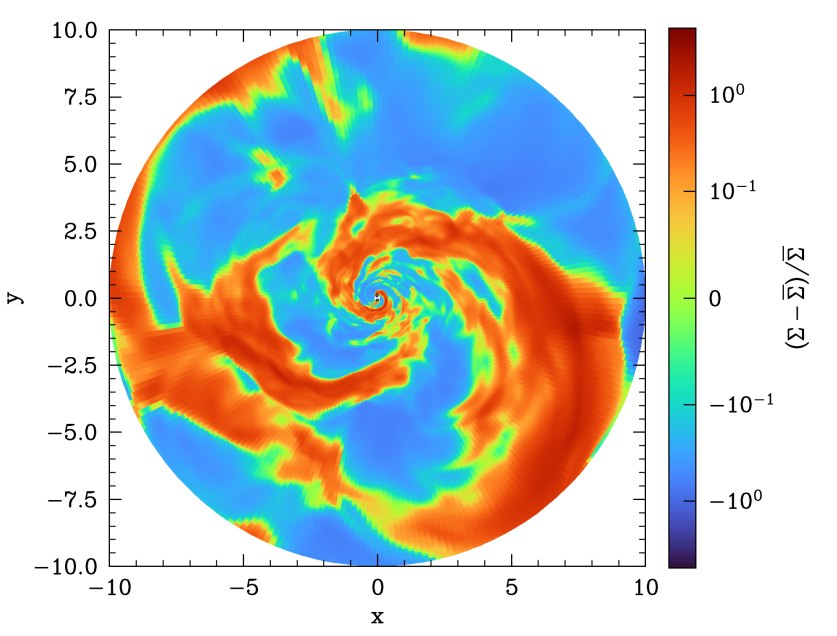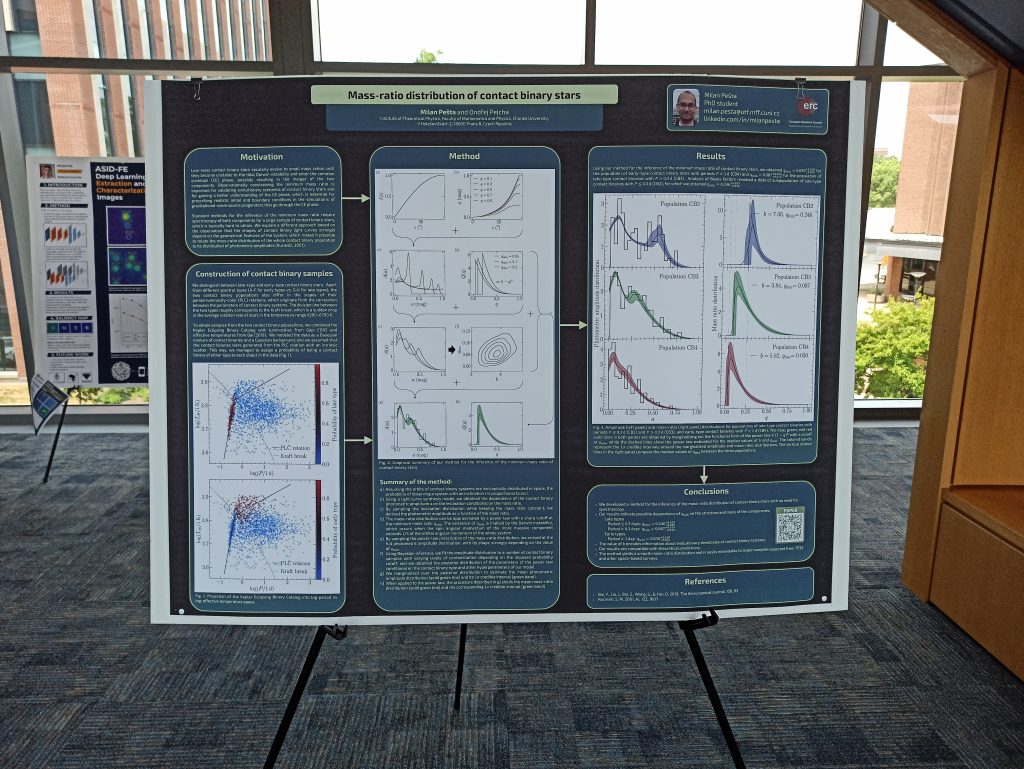In the past two weeks we were visited by Łukasz Wyrzykowski from Warsaw University and Subo Dong and KIAA in Beijing. Both gave seminars and talked to students, postdocs, and staff.

Time-domain astronomy group at Charles University, Prague
In the past two weeks we were visited by Łukasz Wyrzykowski from Warsaw University and Subo Dong and KIAA in Beijing. Both gave seminars and talked to students, postdocs, and staff.

PhD student Jakub Cehula submitted a paper on Dynamics of baryon ejection in magnetar giant flares: implications for radio afterglows, r-process nucleosynthesis, and fast radio bursts written together with Todd Thompson (Ohio State) and Brian Metzger (Columbia/Flatiron). The paper is a result of Jakub’s two month visit at Ohio State earlier this Spring.

It was great to have Philipp Moesta from University of Amsterdam visit us to give a seminar and discuss science.
In his newest paper, Damien Gagnier takes the next step by simulating post-dynamical common envelope evolution with MHD with Athena++. We see amplification of B to similar levels as in other contemporary work, but with a much lower kinetic-to-magnetic energy ratio and no evidence for jets. Magnetic fields have a negligible impact on many features including binary orbit evolution. Damien performed detailed analysis of reservoirs of energy and transfer between them. He also measured α-disk parameter of ≃0.034, but the “viscosity” is not straighforwardly due to B. There is much more – check out the paper at https://arxiv.org/abs/2310.16880, now under review in A&A.



New paper by our (former) postdoc Diego Calderón in collaboration with colleagues from the USA. Radiation hydrodynamics simulations of complicated structures in tidal disruption events. Paper available on astro-ph.

Our group had a strong presence at the EAS meeting in Krakow, where Jakub Cehula, Damien Gagnier, Milan Pešta, and Ondřej Pejcha presented talks. It was great meeting old friends, making new, and learning about exciting science.




Camille Landri is spending 6 weeks this summer attending the Kavli Summer Program on Astrophysics: The lives, deaths and afterlives of interacting stars. After the first week of lectures, she is busy working on numerical project on common envelope evolution.
Congratulations to our former postdoc Diego Calderón who recently won Humboldt Fellowship to work at Max-Planck-Institut für Astrophysik in Garching on binary stars in the Galactic center.
Milan Pešta spent two weeks at Penn State attending 2023 Summer School on Astrostatistics and the followup conference on Statistical Challenges in Modern Astronomy, where he presented a poster.

Anthony Kirilov spent entire May visiting the group of Prof. Rosswog at Hamburg Observatory, where he continued working on radiation hydrodynamics with our former postdoc Diego Calderón.
